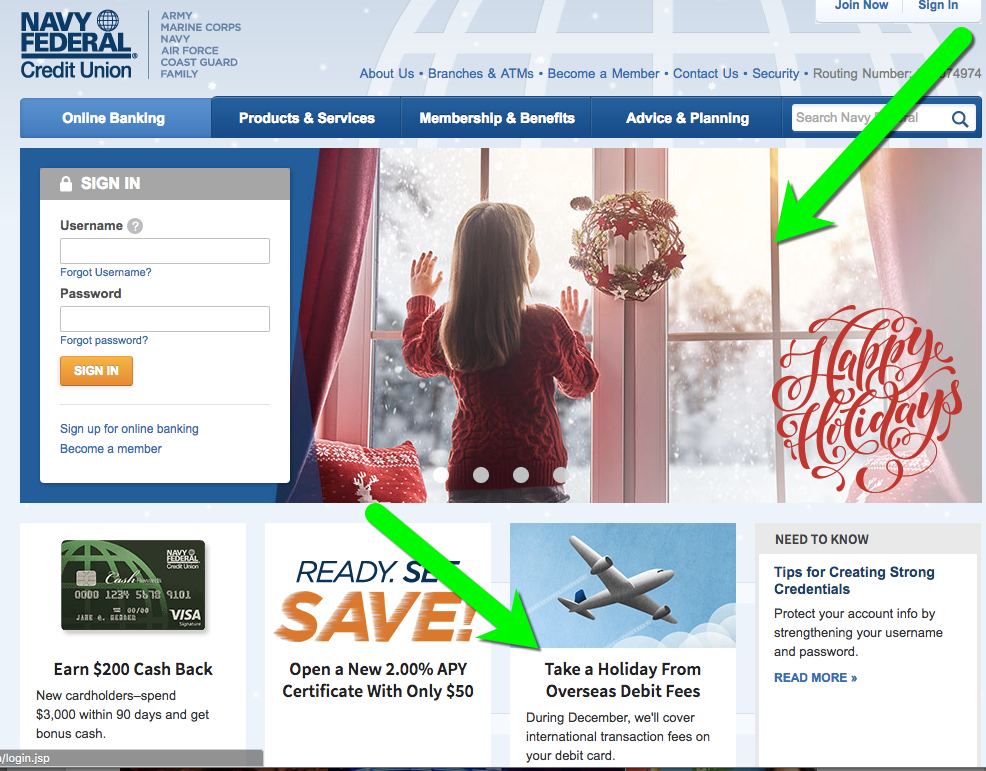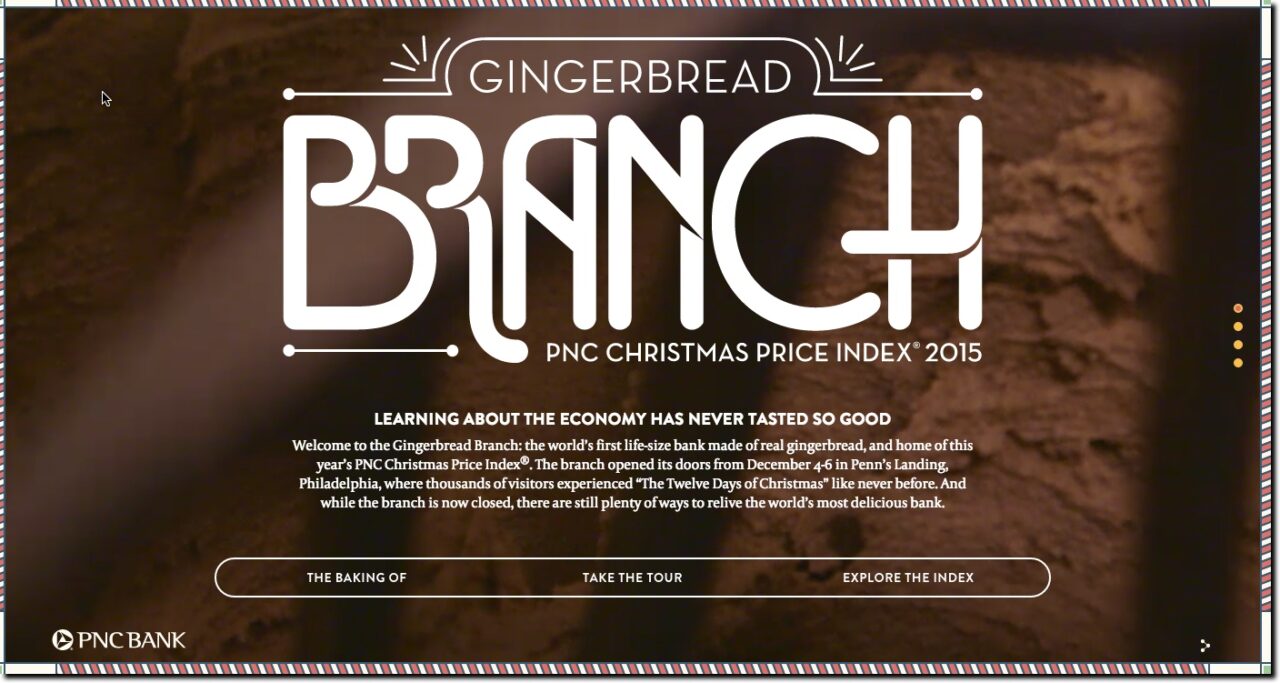
 Happy holidays everyone! The holiday spirit is everywhere, except it seems, at the big U.S. banks. I get that budgets are busted, employees on vacation, and you don’t want to offend anyone by mentioning (or NOT mentioning) Christmas. Still, how hard would it be to throw a couple non-denominational snowflakes on top of your logo and wish everyone a happy holiday? Or better yet, how about a little bonus, like the holiday skip-payment offer similar to that featured on Texas Tech Federal Credit Union’s homepage (see above).
Happy holidays everyone! The holiday spirit is everywhere, except it seems, at the big U.S. banks. I get that budgets are busted, employees on vacation, and you don’t want to offend anyone by mentioning (or NOT mentioning) Christmas. Still, how hard would it be to throw a couple non-denominational snowflakes on top of your logo and wish everyone a happy holiday? Or better yet, how about a little bonus, like the holiday skip-payment offer similar to that featured on Texas Tech Federal Credit Union’s homepage (see above).
In our annual holiday survey of the 25 largest banks, we found only two, PNC Bank and Key, that acknowledged the year-end holidays on their homepages. And while they are just barely outside the 25 largest, Navy Federal FCU was in the holiday spirit as well.
That’s a pretty poor showing, dramatically down from the 8 to 10 participants in years past (see links below). Caveat: The historical comparison is not perfect due to timing. I was tardy this year and didn’t take my holiday tour until 27 Dec, so I may have missed some decorations that had already been stored in the banks’ virtual attics.
Previous year-end holiday posts: 2015, 2014, 2013, 2012, 2011 (big banks); 2011(credit unions/community banks); 2009 part 1, 2009 part 2, 2007, 2006, 2006, 2004.
———-
Holiday 2016 messages
PNC Bank: PNC continues to go all-in with its long-running and clever cost analysis of the items from the 12 Days of Christmas song.

Key Bank: Key has also consistently added holiday bling to its website. This year, running two holiday-themed items, one for checking and the other a broad security warning.


Honorable mention: While just outside the top-25 in size, Navy Federal FCU showed its holiday spirit with a classy page-dominating graphic along with a nice message about lack of fees on international purchases.















 In my annual look at holiday offerings from major banks, I found that Scrooge still roams the halls at many of the big names. Only eight of the 20 largest U.S. banks are using holiday-themed promotions or graphics (note 1). That’s one more than
In my annual look at holiday offerings from major banks, I found that Scrooge still roams the halls at many of the big names. Only eight of the 20 largest U.S. banks are using holiday-themed promotions or graphics (note 1). That’s one more than 













 Since I began blogging in 2004, I’ve usually run a year-end post looking at the holiday marketing efforts of the top-20 U.S. banks (links below). This year, only 7 of the 20 banks are using holiday or seasonal imagery on their homepages. That’s a decrease of 3 over last year.
Since I began blogging in 2004, I’ve usually run a year-end post looking at the holiday marketing efforts of the top-20 U.S. banks (links below). This year, only 7 of the 20 banks are using holiday or seasonal imagery on their homepages. That’s a decrease of 3 over last year. 































